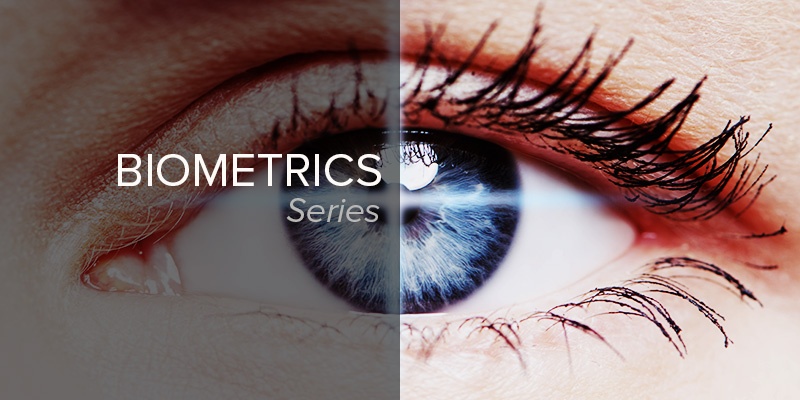
We’ve talked about fingerprint and facial recognition technology. That brings us to the last of the “big three” biometric technologies – iris recognition. It’s been considered the stuff of science fiction, but today it’s a reality and is being used for everything from border and access control to time-and-attendance and cybersecurity.
Iris recognition uses the unique pattern of your iris – the colored part of your eye – to authenticate and/or identify you. It is not to be confused with a retinal scan. While both technologies use parts of the eye for identification, a retinal scan uses the complex structure of the capillaries that supply the retina with blood. Iris recognition simply takes a photo of the iris using an infrared camera. Retinal scans shoot an unperceived beam of low-energy infrared light into a person’s eye as they look through the scanner’s eyepiece. Iris recognition technology is faster and less invasive than retinal scan technology.
We say the iris is unique and that’s because it is. No one has the same iris pattern – even twins. The iris is formed in utero and after about the age of one it doesn’t change. That makes it one of the most stable biometric technologies available. Fingerprints can become worn or scarred and faces change as people grow older or add/remove facial hair, but the iris remains the same.
Here are some positives iris recognition brings to the table:
- Accurate – It is considered one of the most accurate biometric technologies available. It has the lowest False Rejection Rate (FRR) and False Acceptance Rate (FAR) of the “big three”
- Stable – The iris is unique to each individual and it doesn’t change over time
- Fast – It takes two minutes to enroll in an iris recognition system and only two seconds for authentication
- Touchless – Users never have to touch or come in direct contact with the system making it a more hygienic option
And here are some of the negatives:
- Cost – It is one of the most expensive biometric technologies available. However, as new technology is released the price will continue to decrease
- Users must be compliant – People have to enroll in an iris recognition program and must cooperate by standing in front of the iris reader
- Limited reading distance – Users must stand within several feet of the reader for an accurate authentication
Passwords, magnetic and proximity cards are all going the way of the lock and key and they are being replaced with new technologies that are more convenient and secure. Biometrics have already become one of those technologies. Selecting which system to use means really looking at your operation and goals. Is price a concern or is accuracy more important? Do you need a system that is hygienic or is it more important that users don’t have to be compliant with the system?
These are all questions a knowledgeable security integrator will be able to help you answer to find a system that works for your organization.
